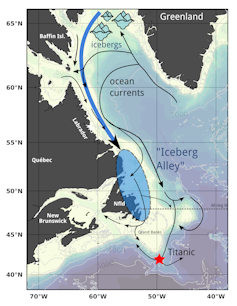In the premiere episode of the Cottage Life Podcast Season 3, we’ll listen to an essay about the summer secret that keeps David Macfarlane coming back to the cottage each year. (Hint: it involves buried treasure). Listen here or visit cottagelife.com for access to all of the episodes.
The invitation to Mr. Thomson’s treasure hunt was waiting for us when we arrived at the cottage. We had no idea what to make of it.
We were not, to put it mildly, cottage types. Our biggest problem was that the rocky island in Georgian Bay where we were spending our first family summer holiday had not exactly been child-proofed. The shoreline fell steeply to deep water. The paths across the island—steering a route between ankle-snapping drops and patches of poison ivy—were a little vague. Certainly, more vague than the downtown sidewalks to which our two young children, ages six and three, were accustomed.
I was the one who had arranged to rent a cottage in a sleepy inlet, to the north of Parry Sound. My wife was surprised when I told her, but unruffled in the way wives are when they think they can easily undo a husband’s silliness. I had not mentioned the deposit. “What’s it like?” she asked.
I listed its attractions: on an island, no hydro, no running water, no telephone.
“Have you completely lost your mind?”
And for the first two days, as the rain fell, and as the fire sputtered and smoked, and as we continued to shout impatiently at the children to put on their lifejackets, it appeared as if I had—lost my mind. What had I been thinking? Well, actually, I had been thinking of my childhood summers—of a few magical holidays at a cottage that my parents had rented when I was young. I wanted our children to have the same kind of experience. But after the second day of calamine lotion, damp towels, and Crazy-Eights, I began to think that nostalgia was not an entirely useful tool for the planning of family holidays.
Everything changed, however, on the third day—the day of Mr. Thomson’s treasure hunt. The sun came out, for one thing. We peered at a view that had been largely shrouded by mist and rain, and realized that we were in an astonishingly beautiful place. By early afternoon, we were heading carefully to Mr. Thomson’s, by canoe.
Mr. Thomson, a cordial gentleman of about 70, greeted us warmly on his dock. He and his two equally gracious brothers share a lovely old cottage on a windswept point and have summered on the inlet all their lives. In the six summers we have returned since, I have never quite sorted out the complex ties of blood and marriage by which the family is related to almost everyone else in the inlet.
Mr. Thomson—a man of infinite patience and with the ability to communicate directly and magically with children—explained to the young people how the treasure hunt worked. Most of them already knew: Teams of three or four were each given a compass, a list of bearings, and a quick lesson in orienteering, and, if they followed their readings carefully, they would eventually discover the treasure—a peach pit. This was to be returned to the Thomson’s cottage, and exchanged for candy bars.
The courses varied in difficulty. The most advanced involved heading off across the water. My wife and I watched with trepidation as our six-year-old daughter waved bravely from the bow of a departing rowboat. “Just untying the apron stings a little,” Mr. Thomson said to my wife.
Our son was with a much more junior team—pursuing a land-bound course behind the cottage. Mr. Thomson and I followed them and, near the end of their quest, he said something that I still take to be the great secret of summer and which, more than anything, is the reason we return to the inlet year after year.
I had spotted the little cairn of stones where the peach pit was hidden. I had absent-mindedly started moving towards it while the kids were still crouched over their compass. Mr. Thomson placed his hand on my arm, holding me back. “Always,” he said solemnly, “let the children discover the treasure.”





































